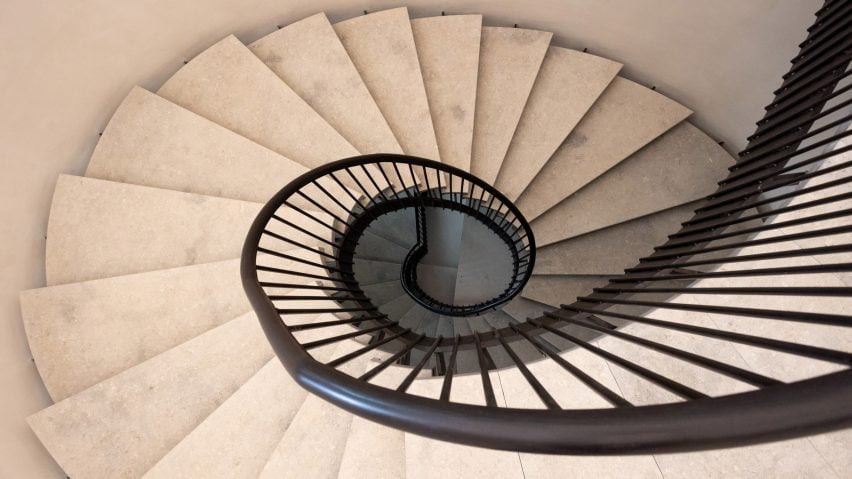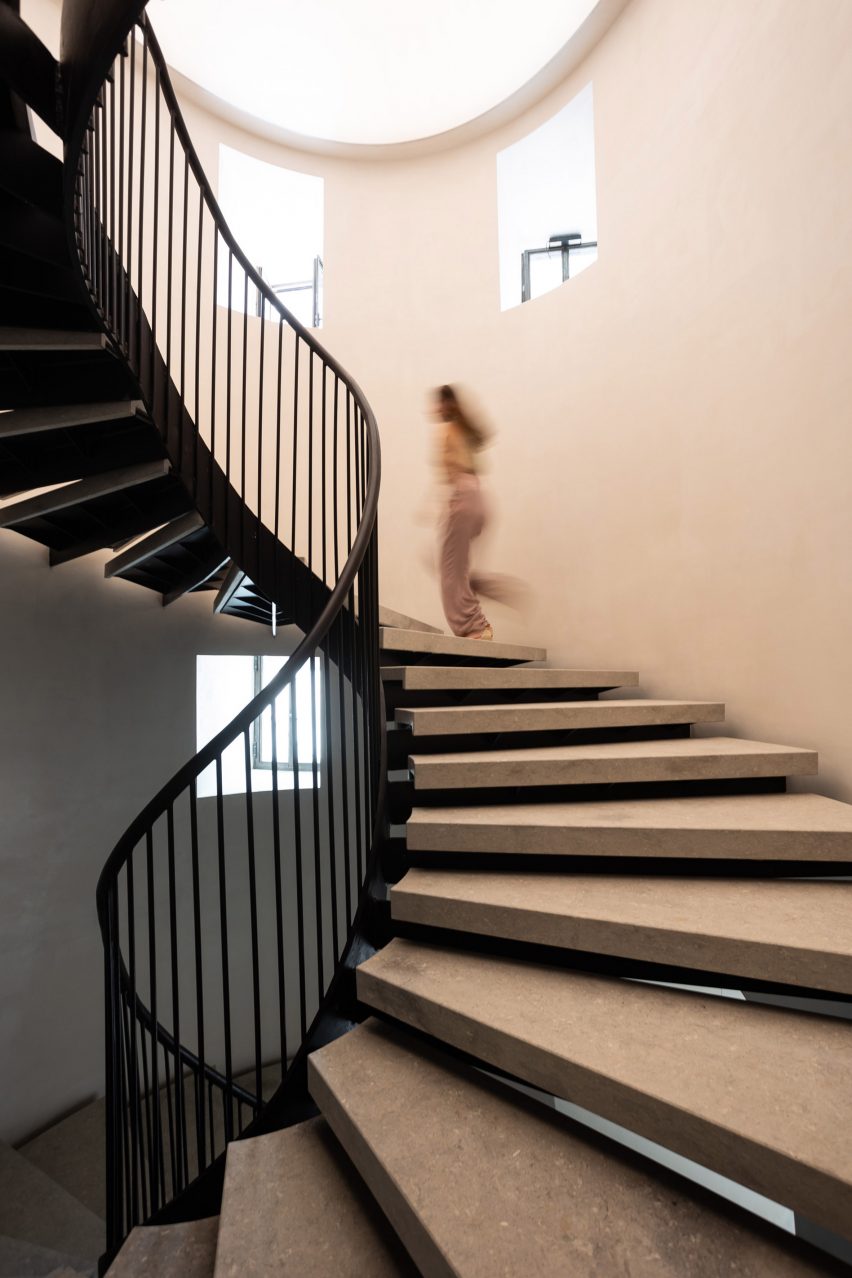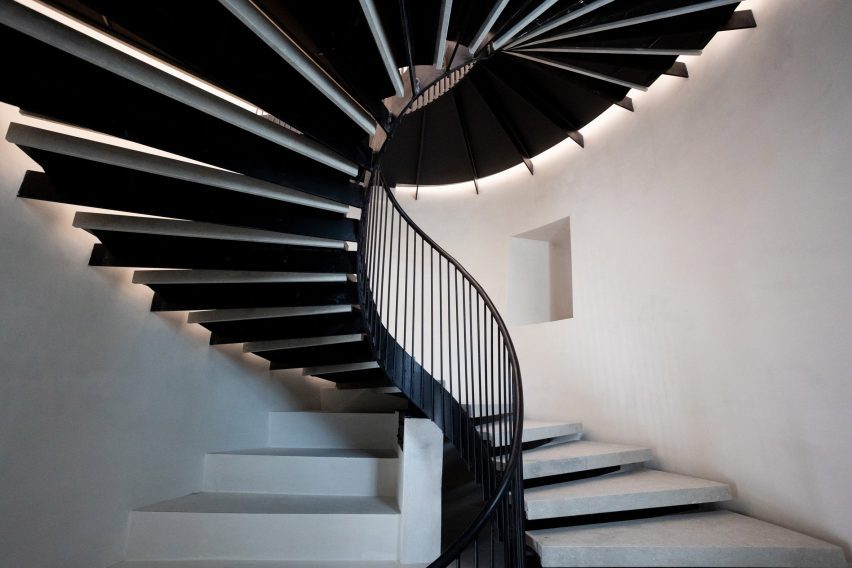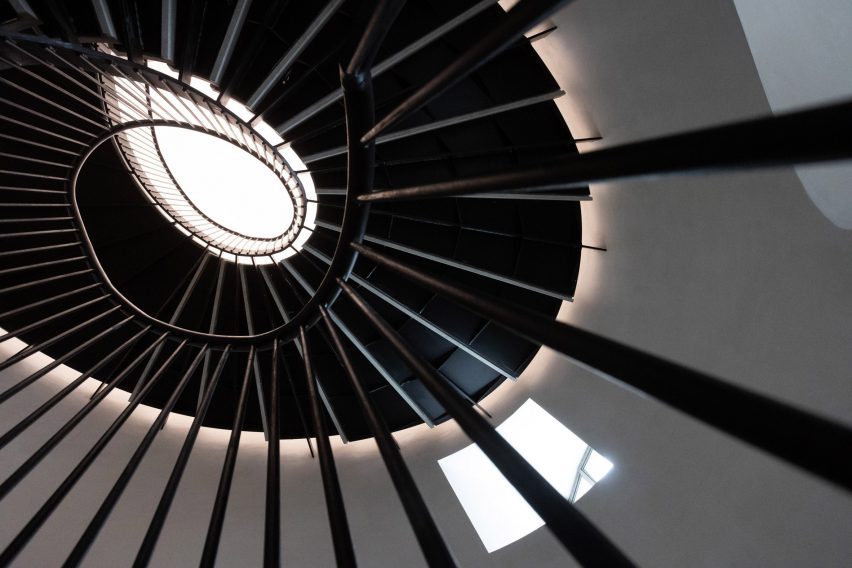
Carsten Höller adds Doubt Staircase to 18th century Venetian palazzo
Artist Carsten Höller has created a spiral staircase with an incline of five degrees to make users uneasy at the Palazzo Diedo in Venice.
Höller installed the piece, which was designed both as an artwork and a functional staircase, as part of a renovation of the 18th century Palazzo Diedo by Italian practice Silvo Fassi.
The structure was built within an unfinished staircase that was abandoned after the palazzo's original architect, Andrea Tirali, died.

Named Doubt Staircase, each of the treads was placed at a five-degree angle, with the aim of creating a feeling of slight unease for the user.
"Carsten Höller is famous for the slides he has built, but now he ventures into building an oval staircase," said Baldo Hauser, a pseudonym of Carsten Höller, in a press release.
"He must have had the Venetian staircases of Palazzo Contarini del Bovolo and Palladio in mind, but this one is inclined, like the city as a whole perhaps, or the human mind: how do we deal with verticality, and order in general, when the world we live in is everything but straight?"

The staircase connects the ground and first floors at the historic palazzo, which recently reopened as the Berggruen Arts & Culture contemporary art museum.
Each of the steps was made from Vicenza stone supported on black steel frames that were connected to the palazzo's walls and the base of the central balustrade.
The overall form has similarities to another pair of well-known staircases in the city.
It recalls the spiral staircase designed by Italian architect Palladio at the Accademia in the 16th century and the arcaded staircase at the 15th century Palazzo Contarini del Bovolo.

German artist Höller is best known for creating a series of slides in unusual locations.
These include slides within the courtyard at the Palazzo Strozzi in Florence, alongside a shopping mall in Miami and within the Anish Kapoor-designed ArcelorMittal Orbit at London's Olympic park.
The photography is by Massimo Pistore, courtesy of Carsten Höller Studio and Palazzo Diedo / Berggruen Arts & Culture.